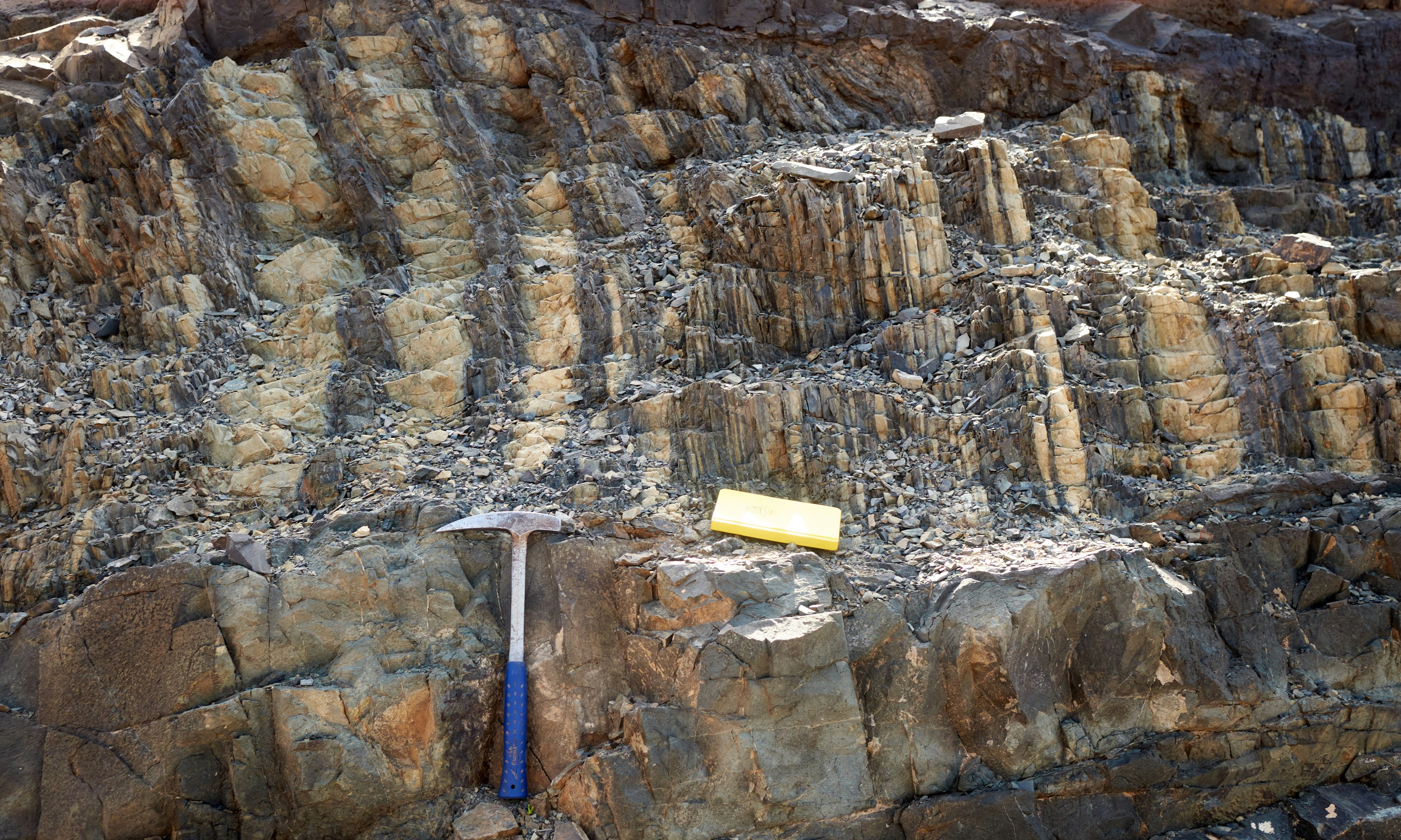
Introduction to Earthquakes
An earthquake is a natural phenomenon characterized by the sudden release of energy in the Earth’s crust, resulting in seismic waves that cause ground shaking. This release of energy typically occurs along geological faults, where blocks of crust move against each other. Earthquakes can vary significantly in magnitude, strength, and duration, making them one of the most studied geological events. Understanding their occurrence is crucial for assessing risks and implementing safety measures in regions prone to seismic activity.
The significance of earthquakes extends beyond mere geological curiosity; they have profound implications for human life and infrastructure. Regions that lie on active fault lines are especially vulnerable to earthquakes and must often contend with the ramifications of such events, including destruction of buildings, loss of life, and disruptions to essential services. For example, the 2010 Haiti earthquake, registering a magnitude of 7.0, resulted in a catastrophic death toll and widespread devastation, highlighting the profound impact of earthquakes on communities and economies.
Understanding earthquakes is not only vital for scientists studying the Earth’s geology but also for urban planners and governments aiming to protect communities from potential disasters. As the world continues to grapple with the implications of natural disasters, a comprehensive understanding of earthquakes becomes increasingly essential for promoting safety and resilience.
The Earth’s Structure and Tectonic Plates
The Earth is a complex structure composed of several layers, each playing a crucial role in geological processes, including the occurrence of earthquakes. The primary layers of the Earth are the core, mantle, and crust. The innermost layer, the core, is comprised mostly of iron and nickel, possessing both a solid inner section and a liquid outer segment. Surrounding the core is the mantle, a thick layer of semi-solid rock that extends to about 2,900 kilometers beneath the Earth’s surface. Above the mantle lies the crust, the Earth’s outer layer, which is relatively thin and varies in thickness from approximately 5 kilometers beneath the oceans to up to 70 kilometers beneath the continents.
At the core of seismic activity are tectonic plates—massive slabs of the Earth’s crust and upper mantle that float on the semi-fluid mantle below. The Earth’s surface is divided into several tectonic plates, which include the Pacific Plate, North American Plate, Eurasian Plate, African Plate, South American Plate, Indo-Australian Plate, and Antarctic Plate. These plates are in constant motion, driven by the heat and convection currents within the mantle. The interactions of tectonic plates occur at their boundaries, where they can diverge, converge, or slide past one another. These interactions can generate immense stress over time, ultimately leading to the release of energy in the form of seismic waves, which we recognize as earthquakes.
Understanding the structure of the Earth and the mechanics of tectonic plates is essential for comprehending why earthquakes occur. Their movements can result in faults being formed, often at the boundaries where two plates interact. As these faults accumulate strain, they eventually rupture, resulting in an earthquake. Thus, the dynamic nature of the Earth’s layers, particularly the behavior of tectonic plates, directly contributes to the seismic events that can be felt around the globe.
Types of Plate Boundaries
Earthquakes are closely linked to the movement of tectonic plates, which are rigid sections of the Earth’s lithosphere. These plates interact at different types of boundaries, each exhibiting unique characteristics and behaviors. There are three main types of tectonic plate boundaries: convergent, divergent, and transform boundaries.
Convergent boundaries occur where two plates collide or move towards each other. This interaction often results in significant geological activity, including the formation of mountain ranges, volcanic activity, and, notably, earthquakes. An example of a convergent boundary can be found at the interface between the Indian Plate and the Eurasian Plate, where the collision has led to the uplift of the Himalayan mountain range, as well as numerous earthquake occurrences in the region.
Divergent boundaries are formed when two tectonic plates move away from each other. This type of boundary is commonly associated with mid-ocean ridges, where new oceanic crust is created as magma rises to the surface. Earthquakes along divergent boundaries tend to be less powerful than those associated with convergent boundaries, but they nonetheless represent an essential mechanism of seismic activity. A notable example of a divergent boundary can be observed at the Mid-Atlantic Ridge, where the North American and Eurasian Plates are moving apart, resulting in both volcanic activity and earthquakes.
Lastly, transform boundaries occur where two plates slide past each other horizontally. The friction associated with their sliding motion can lead to the buildup of stress along faults, which, when released, results in earthquakes. The San Andreas Fault in California serves as a prime example of a transform boundary, where the Pacific Plate and the North American Plate interact. This transform boundary is infamous for its seismic activity, which has caused damaging earthquakes throughout history.
The Role of Stress and Strain in Earthquakes
Stress and strain in the Earth’s crust are fundamental concepts that help us comprehend the mechanics behind earthquakes. Stress refers to the force applied over an area, while strain is the deformation that occurs as a result of this stress. The Earth’s crust is constantly under stress due to tectonic forces generated by the movement of the Earth’s plates. As these plates shift, they accumulate energy along faults—fractures in the Earth’s crust where movement occurs.
When stress exceeds the strength of rocks along these faults, it can lead to sudden slips, resulting in an earthquake. The buildup of this energy can occur over long periods, making it difficult to predict when a fault will slip. Different types of faults—such as normal, reverse, and strike-slip—play respective roles in seismic activity. Normal faults occur when tectonic forces pull two blocks of the Earth apart, while reverse faults happen when the blocks are pushed together. Strike-slip faults, on the other hand, involve lateral movement, where two blocks slide past each other horizontally.
The interactions between stress and strain create complex scenarios in the Earth’s crust, contributing to earthquakes of varying magnitudes. Over time, repeated episodes of stress accumulation and release can lead to the formation of more complex fault networks. Understanding these relationships is crucial for assessing potential seismic hazards in different regions worldwide. Thus, the study of stress and strain is essential not only for the scientific community but also for communities at risk of seismic events. Advances in geophysical research continue to refine our understanding of these processes, enabling better earthquake preparedness and response strategies.
Seismic Waves: How Earthquakes Are Measured
Seismic waves are the result of sudden energy releases in the Earth’s crust, often triggered by tectonic shifts or volcanic activity. They propagate through the ground and are primarily categorized into three types: primary waves (P-waves), secondary waves (S-waves), and surface waves. Each type of seismic wave travels at different speeds and exhibits distinct characteristics, making them crucial for understanding the dynamics of an earthquake.
P-waves are the fastest seismic waves, traveling through solid, liquid, and gas. These compressional waves cause particles to oscillate back and forth in the direction of wave propagation, allowing them to travel through the Earth’s inner layers. Because of their speed, they are typically the first waves detected by seismographs during an earthquake. This characteristic of P-waves enables researchers to quickly assess the occurrence of seismic events and their preliminary impact.
In contrast, S-waves are slower and can only travel through solid materials. They move particles perpendicular to the direction of their propagation, resulting in a side-to-side motion. S-waves generally arrive after P-waves, providing critical data about the properties of the Earth’s crust. Observing the arrival times of these waves at various monitoring stations enables seismologists to locate the epicenter of an earthquake accurately.
Surface waves, which encompass both Love and Rayleigh waves, travel along the Earth’s surface. These waves typically cause the most damage during an earthquake due to their prolonged vibrations and higher amplitudes. Seismographs are instrumental in measuring all three types of seismic waves. By recording their durations, frequencies, and amplitudes, these instruments help scientists assess the strength of an earthquake and gather essential information that informs rescue teams about the disaster’s effects.
The data collected through seismographic measurements can significantly enhance our understanding of seismic events and assist in earthquake preparedness and response efforts worldwide.
Human Impact and Earthquake Prediction
Earthquakes can have devastating effects on human societies, leading to significant destruction of infrastructure, loss of life, and extensive economic consequences. The collapse of buildings, bridges, and roads can result not only in immediate harm but also in prolonged disruptions to communities. These natural disasters can turn previously vibrant areas into zones of despair, where recovery efforts may take years or even decades. The loss of life during an earthquake profoundly affects families and communities, creating emotional and psychological scars that persist long after the physical rebuilding has begun.
The economic consequences are equally severe. In addition to the immediate costs of rebuilding, the long-term disruptions to local economies can be significant. Businesses may close, and unemployment rates can surge, leading to a cycle of hardship that affects generations. Governments face immense pressure to allocate resources towards disaster response and recovery, often diverting funds from other critical areas such as education and public health.
In recent years, advancements in technology have improved our ability to predict earthquakes, though challenges remain. Scientists utilize a combination of historical data, seismic monitoring, and advanced modeling techniques to assess earthquake risk. Seismographs collect data on ground motion, while satellite imaging can monitor tectonic plate movements. However, despite these advancements, accurately predicting the exact timing and intensity of an earthquake remains elusive. The inherent unpredictability of seismic activity poses a major hurdle for researchers. Additionally, public misunderstanding and fear can lead to skepticism regarding predictive technologies, hindering effective communication and preparedness strategies.
In conclusion, understanding the human impact of earthquakes and advancing prediction technologies is crucial for developing effective mitigation strategies. As our knowledge and methods improve, societies can better prepare for potential disasters, thereby reducing the overall impact on human life and economic stability.
Case Studies of Notable Earthquakes
Throughout history, several significant earthquakes have profoundly impacted various regions of the world, reshaping communities and knowledge surrounding seismic activity. One of the most notable examples is the 1906 San Francisco earthquake, which occurred on April 18. Measuring approximately 7.9 on the Richter scale, this earthquake was caused by the movement along the San Andreas Fault. The event resulted in widespread destruction, with about 80% of San Francisco’s structures being damaged or destroyed. The ensuing fires exacerbated the devastation, leading to an estimated loss of over 3,000 lives and considerable property damage amounting to nearly half a billion dollars. This earthquake highlighted the crucial need for improved building codes and urban planning in earthquake-prone areas.
Another significant case study is the 2011 Tōhoku earthquake in Japan, which struck on March 11 and measured 9.1 on the moment magnitude scale. It is deemed one of the most powerful earthquakes ever recorded. This seismic event was triggered by the subduction of the Pacific Plate beneath the North American Plate, leading to a massive tsunami that devastated coastal communities. It resulted in approximately 18,500 deaths and displaced over a hundred thousand people. The disaster also caused the Fukushima Daiichi nuclear power plant meltdown, leading to long-term environmental and health concerns. The Tōhoku earthquake emphasized the importance of disaster preparedness and robust infrastructure to mitigate the impacts of seismic events.
These case studies of notable earthquakes illustrate the complex interplay between geological forces and their profound consequences on human settlements. They serve as critical reminders of the need for ongoing research and preparedness to better withstand future seismic events and minimize their impact on communities worldwide.
Preventive Measures and Safety Protocols
Earthquakes pose significant risks, particularly in areas with high seismic activity. To mitigate this risk, implementing effective preventive measures is crucial. One of the foremost strategies involves adhering to established building codes. These codes are designed to ensure structures can withstand seismic shocks, minimizing potential damage and protecting lives. Designing buildings with flexible materials and incorporating reinforced frameworks can significantly enhance their resilience during an earthquake.
Infrastructure reinforcement is another vital aspect of earthquake preparedness. Bridges, roads, and public utilities must be constructed or retrofitted to endure seismic events. Government agencies and organizations play an essential role in assessing existing infrastructure and determining necessary upgrades. Regular inspections and maintenance can ensure that these structures remain capable of withstanding the forces of nature. Community planners should prioritize seismic safety in all new projects, fostering a culture of resilience.
Emergency preparedness also plays a key role in earthquake risk reduction. This includes developing comprehensive response plans that outline procedures for both individuals and local authorities. Regular drills can enhance community awareness by training citizens on how to react when an earthquake occurs. These drills help familiarize individuals with safety protocols, such as “Drop, Cover, and Hold On,” and reinforce the importance of having an emergency kit that includes essentials such as water, food, and medical supplies.
Education is integral to ensuring community readiness. Programs aimed at informing residents about earthquake risks and safety measures can be highly effective. Schools, local governments, and community organizations should collaborate to conduct workshops and distribute informative materials on earthquake preparedness. By fostering a proactive approach through education, communities can significantly reduce the risks associated with seismic events, ensuring that they are well-prepared to respond in times of crisis.
Conclusion: The Importance of Understanding Earthquakes
In summary, the study of earthquakes is vital for numerous reasons, primarily due to their potential to cause extensive damage and loss of life. As outlined in this blog post, earthquakes are primarily caused by the movement of tectonic plates, volcanic activity, and human activities such as mining or drilling. Understanding these causes is essential to mitigating their impact and improving safety measures in earthquake-prone regions.
By comprehending how and why earthquakes occur, we can better prepare for their consequences. The lessons learned from historical seismic events, such as the 1906 San Francisco earthquake or the 2011 Tōhoku earthquake in Japan, highlight the necessity of ongoing research and education. They serve as reminders that these natural disasters can strike without warning, affecting not only those living in high-risk areas but also communities far removed from the epicenter.
Awareness of the causes and effects of earthquakes empowers individuals and communities to make informed decisions regarding building codes, emergency preparedness plans, and urban development. It fosters a culture of safety, encouraging citizens to create disaster response strategies and participate in community drills. Governments and organizations must prioritize funding for seismic research and infrastructure improvements, ensuring that we are as prepared as possible to withstand potential tremors.
Ultimately, as the earth continues to shift and reshape, staying informed about earthquakes’ causes and impacts is crucial. It is the responsibility of the global community to remain vigilant and proactive, safeguarding lives and minimizing risks associated with such natural phenomena. We urge readers to support ongoing research initiatives and to take personal steps to educate themselves and their communities on earthquake preparedness. In doing so, we can foster resilience against one of nature’s most formidable forces.






